SILENT SPEECH OF THE RUINS
PRISHNI RAJ
Since time immemorial, architecture has been known to hold the power of storytelling. It is central to both the social and cultural aspects of the global population. Even in the primitive sense of cave paintings, from interior detailing to structural design most spaces have symbolic and sentimental values attached to them. Architectural spaces are similar to that of a dialogue, for the events that went down in history, it speaks of the livelihood of the people inhabited there, what they have endured and what they rejoiced in.
However, in today’s modern era, the involvement of technology and science within architecture has acted as a statement in the already fast paced lifestyle of society. It’s no surprise that even though this promotes convenience and practicality, it also creates a broad
scale of infrastructure with a lack of personality, a lack of story if you will. The story of a place is determined by the identity of the people that lived there, or rather how their stories have been passed down as time elapses. Architecture offers a rich source of narration, speaking to the social and cultural aspects of the place. The artistic and historical vision of spaces themselves comes from the memories and remembrances it carries.
When architectural structures are conserved, they are done so with the intent of re-telling a story and conveying emotions, which otherwise would have been forgotten or untold. When people experience a space that has a historical past associated with it, they experience it in forms of stories hung through the atmosphere, this positively or negatively influences them both emotionally, as well as figuratively.
- Daniel Libeskind (2012)
Communities across the globe typically have an involvement or vote on what is to be preserved or built. This drives specific populations to conserve history by retaining affected infrastructure. These decisions continue to impact, inspire and mould society to consult the past when making decisions that may affect the future. But also in some cases, one section of society can choose to grow out of the past and start anew; with the choice always belonging to the people associated with the historical and cultural context.
This has been studied with the help of various case studiesfrom all around the globe showcasing how architecture has played a role in re-telling history.
‘HISTORY IS NOT SOMETHING WHICH EXISTS IN THE PAST IT IS URGENT AND IS HIDDEN BY TRADITION’
2
ARCHITECTURE AS A DETERANT
CASE STUDY 1: CU CHI TUNNELS
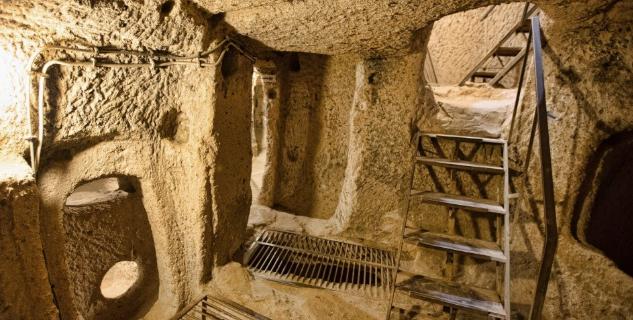
Vietnam, where a handful of spaces that are linked to the tragic event of The Vietnamese War of 1954 continue to be preserved as is today. Cu Chi tunnels are an underground network of spaces created roughly 3 to 10 meters below the surface. These tunnels stretch across the Saigon district. The tunnels stand for the sentimental values of the Vietnamese and to pay honor to those who sacrificed and endured in order to create a future for the people of Vietnam. They are also testament to the tactical brilliance of Vietnam and how it ultimately won the war against America. The conditions one experiences today standing inside the tunnels are the same as what people faced during the war. The dark, tiny,
claustrophobic and suffocating nature of the spaces immerses one, allowing us to take in how miserable the lives of those who lived during the war were, yet how they overcame such events with the utmost determination and vigor.
 1 A & B
1 A & B
3
Cu Chi Tunnels, Vietnam
Today, these spaces voice out the immense pain endured and symbolize the pride of the people of how they survived then, to shape the future that is today. It even portrays a learning curve for military driven pride across the globe and factors in
CASE STUDY 2: THE GENBAKU DOME
The Genbaku Dome or the Hiroshima Peace memorial is another such monument. It was the only structure left standing near the site of the first atomic bomb that exploded on 6 August 1945 in Hiroshima, Japan during the heights of the Pacific War. Formerly known as the Hiroshima Prefectural Industrial Promotional Hall, the Genbaku Dome and its structural elements remain in the same condition as they were immediately after the blast. There have been a few conservation projects to maintain this condition, but only to the extent of minimal reinforcement, the form, materials, substance and design of the dome are left untainted.
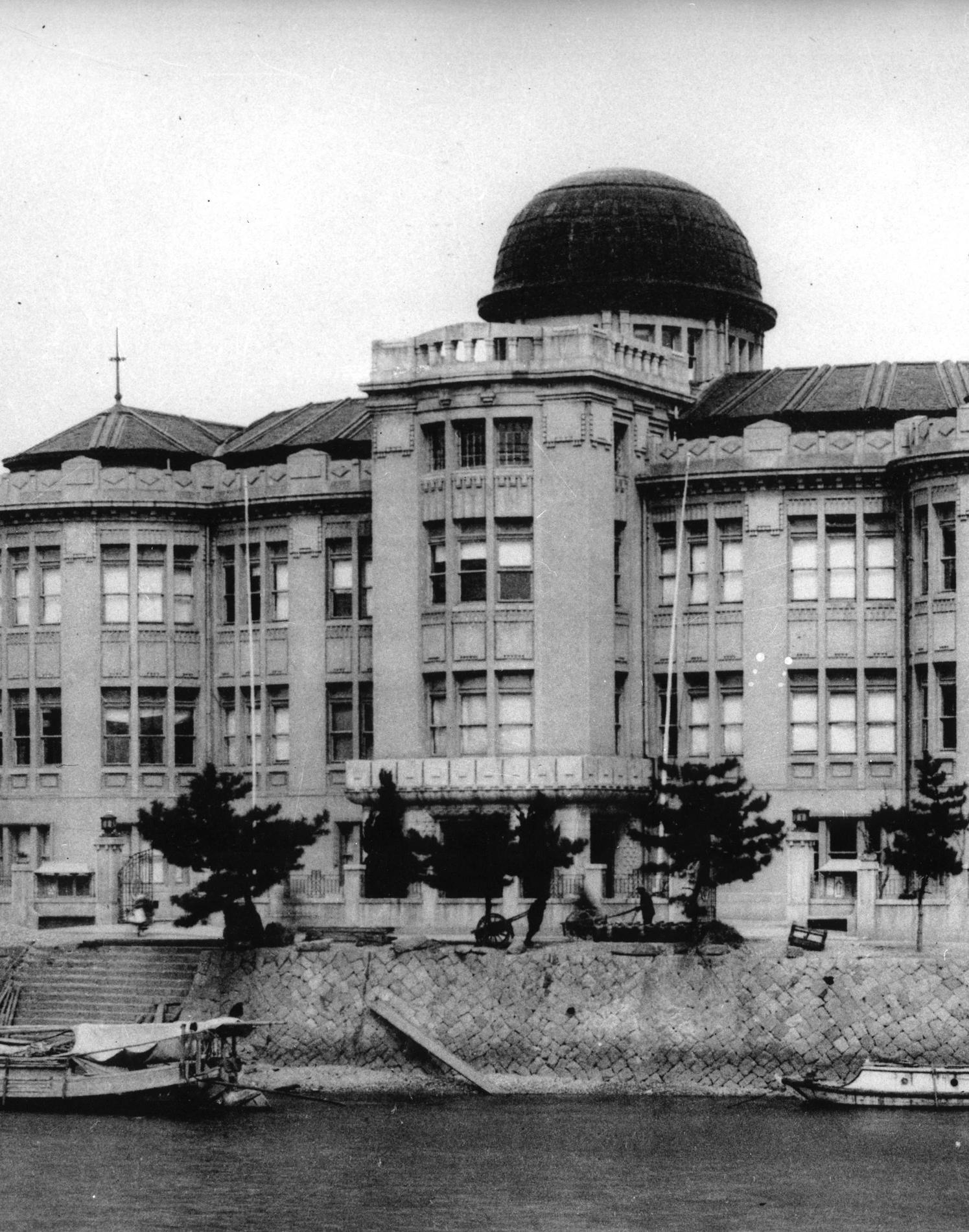
The Dome is now a reminder of the indiscriminate annihilation that atomic weapons carry out and the sheer power they possess. It remains as is, to act as a beacon of world peace and a heavy endorsement of nuclear non-proliferation and ultimately the complete elimination of all nuclear weapons.
for deterrence by reminding society today, of the importance of human life via creating a sympathetic background, and in turn creating empathy for what the nation went through.
2
3
Genbaku Dome before the bombing as an exhibition hall
Genbaku Dome years after the bombing
4

5
ARCHITECTURE AS A CATALYST
CASE STUDY 3 AND INTERVIEW: LIBYA & THE ARAB SPRING REVOLUTION
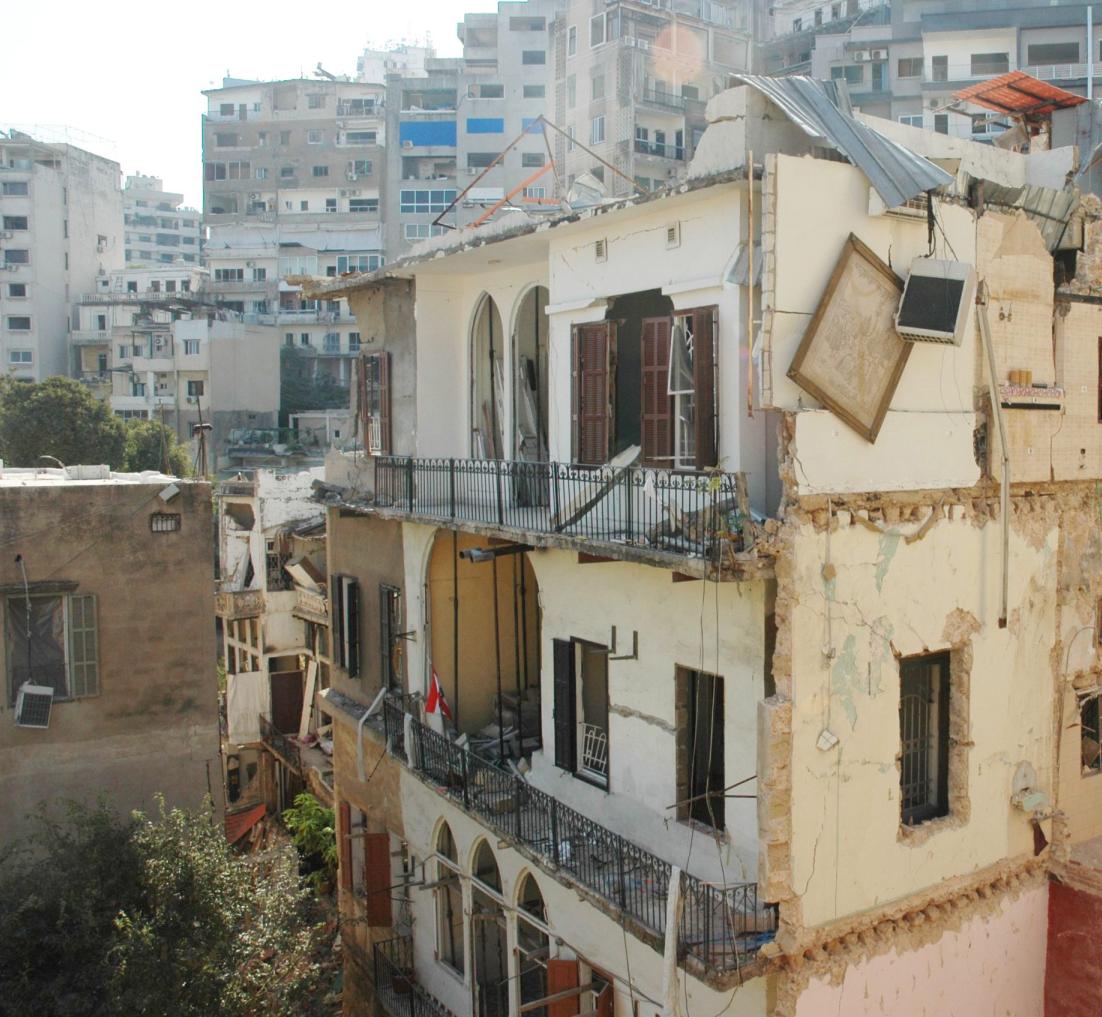
When talking about the various influencing factors, an Italian-built palace comes up. This palace is where King Idris first declared Libya’s independence from Italy in 1951. The Libyan community has decided to preserve the structure with all of its bullet holes and ruins for the time being.
Along with this decision, a strong sense of persistence and a symbol of freedom were preserved. This in turn became an exemplar for the people to fight for their rights again in the future. In a recent interview with Aimee J. Mathew, a survivor of the Arab-Spring Revolution, who talks about her life in Libya. She speaks about how the University of Benghazi, formerly known as the Garyounis University, named by the late dictator Muammar Gaddafi, was destroyed and along with it, her home. The university possessed residential flats for foreign staff and their families which was largely affected during the war. Likewise,
6
WAR, THIS PLACE BECAME THE CLOSEST TO WHAT HOME MEANT
-in an interview with Aimee J. Mathew, a survivor of Arab-Spring Revolution (2022)
the campus was targetedand destroyed during the revolution- with the picture of the dictator that sat at the head of the main building slashed completely.
Regardless of the conditions, the people continued to live among the debris and damage, mostly because there was no government to help reconstruct the structure. This became a driving factor, fueling the fire of the people who were fighting to bring about a change to their current unfair situation. Going forward the university is preserving some of the damage while reconstructing the rest. This is being done as a testament to the freedom from oppression and the success in renewing the University from what it formerly was.
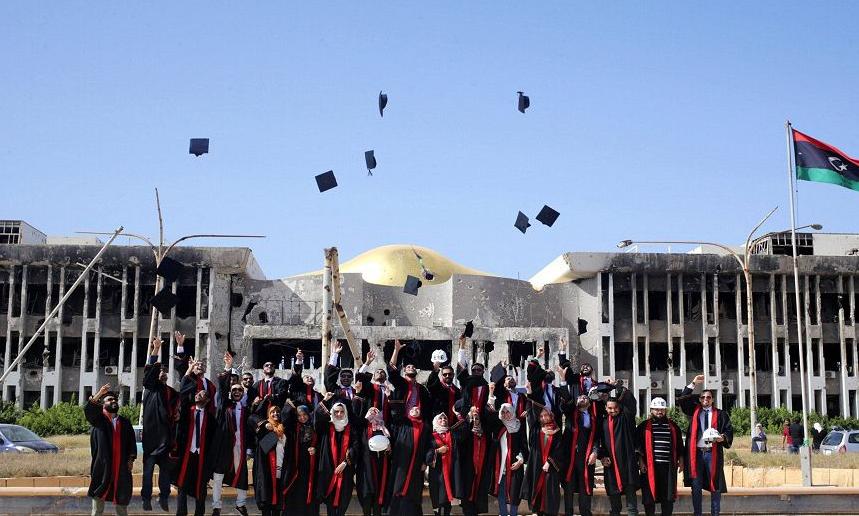
‘UPON LOSING MY HOME TO
’
7
4 A building in the Fouad Boutros corridor in Beirut damaged in the 2020 blast that decimated the city. (photo by Yasmine Dagher, courtesy the World Monuments Fund) 5 Students from the university’s mass communication school posed in their caps and gowns on 15 October, with some battered buildings visible in the background.
ARCHITECTURAL SPACES AS A TESTAMENT TO DESPOTISM
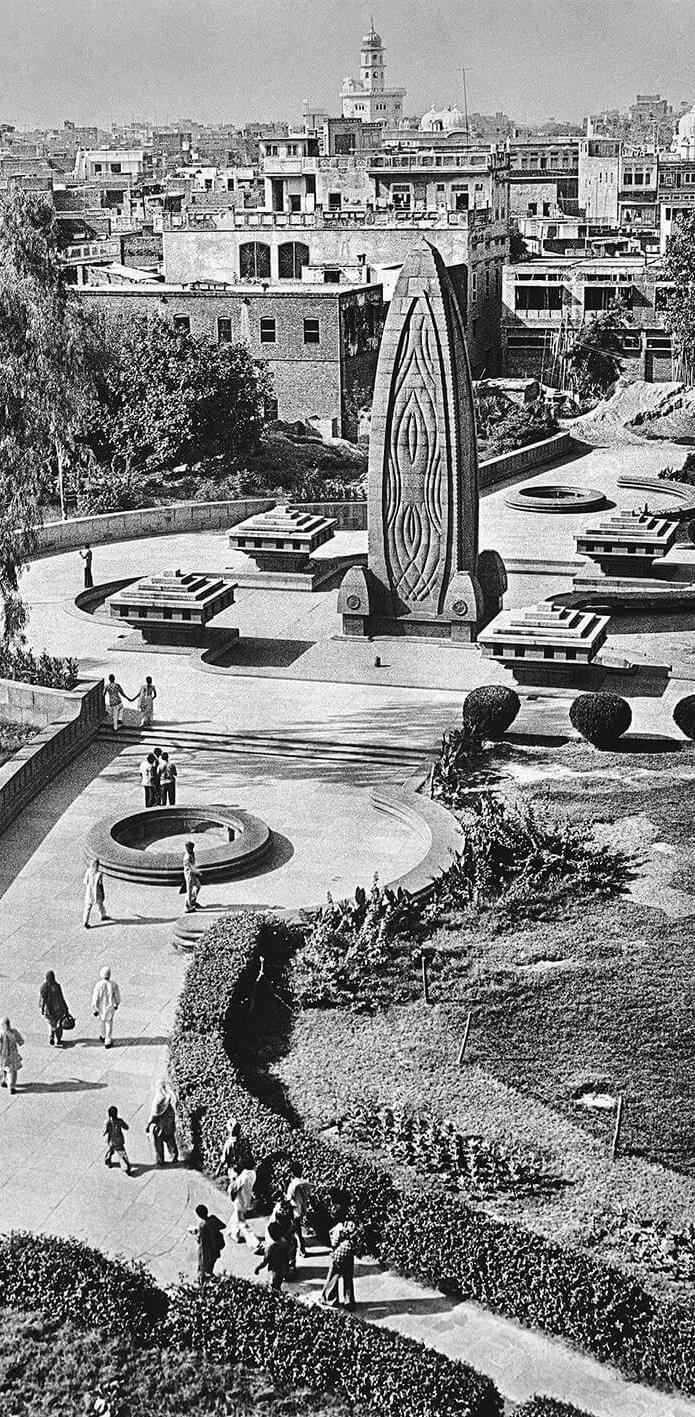
The Jallianwala Bagh is a preserved garden with significant historical importance to India. It is located in Amritsar, Punjab and is a salient memorial for all those wounded and killed in the tenebrific Jallianwala Bagh Massacre that took place on 13th April, 1919.
The garden accommodates a museum, an art gallery and several monuments dedicated to the victims. The Garden serves as a desolate reminder of India's struggle against Britain's attempt to colonize it and acts as a spot of healing and grieving for the vast population affected by the dark events of the time. Interestingly, this preservation acts as both a reminder of the past, allowing people to mourn, as well as a present nudge towards appreciating the freedom and privilege that India has today as an independent nation.
CASE STUDY 4: JALLIANWALA BAGH
8
CASE STUDY 5: CHITTORGARH FORT

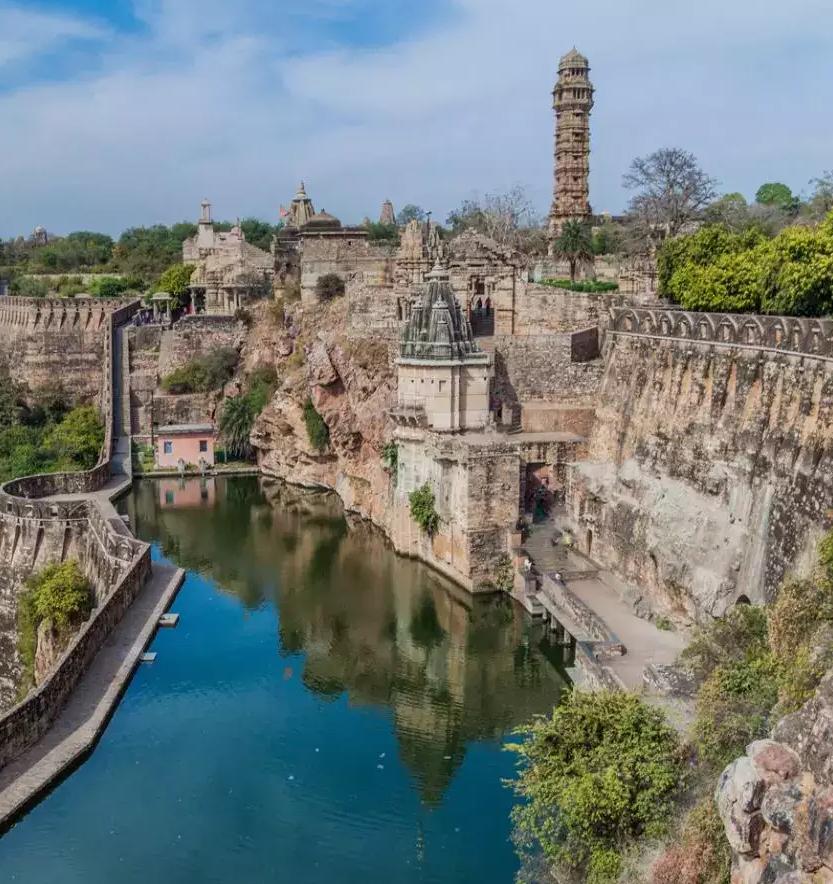
Sticking with how India’s culture centres around historical and traditional symbolism, the Chittorgarh Fort is home to some of the most vital events in the nation’s timeline. The fort, which is now considered a UNESCO world heritage site, was more than once laid at siege. The fort was designed in a way wherein all the 9 gates in the fort allowed sound to travel through to the upper area of the fort, to alert the others in case of an invasion. The fort hosts the biggest Rajput festival, called the ‘Jauhar Mela’. This term ‘Jauhars,’ refers to acts of mass immolation that were committed by women to avoid capture and enslavement by enemy forces. The festival takes place to commemorate the anniversary of the most famous one, Queen Padmavati’s. Regardless of the minor refurbishing in 1905 during the British Raj, the fort is left mostly unadulterated. The pit where Queen Padmavati’s Jauhar took place is still present and open for tourists to visit and see.
The fort serves as a reminder for the Rajputs of the bravery of their ancestors, once again commenting on India’s battles for freedom. These structures also bring the population of India and its vastly different cultures together by shedding light on the horrors of war and the ensuing value of peace. This in itself serves as a nation-unifying force.
7
8
6 Jallianwala Bagh serves as a brutal reminder to events that went down in 1919
The Chittorgarh Fort, the place where 16000 Rajput women chose selfimmolation by jauhar
The Jauhar Sthal inside the fort
9
CASE STUDY 6: THE EMPTY LIBRARY OF BEBELPLATZ, BIBLIOTHEK
Monuments and memorials are one type of sculpture that can serve as reminders of the past. They exist to celebrate past victories and mourn old losses, standing as relics of the past. During Nazi Germany, the German Student Union led a campaign to further cement Nazism as the leading ideology of that time. They ravaged the city, collecting any and all kinds of literature that did not directly promote Nazi culture. These books were then incinerated in ceremonial burnings. This strategy was used to oppose ideologies like Communism, Liberalism, Pacifism, etc.
In this act of cultural genocide, almost all pieces of literature were destroyed- leading to an educational shift and effective conditioning of children and youngsters to follow Nazi dogma. Such events were carried out in Austria as well as in other occupied territories, but the most prominent place of burning was in the Bebelplatz, which is a public square in Berlin, Germany. Statistically, this translated to the destruction of almost 80% of all school libraries and 75% of scientific libraries.
The Empty Library is a public memorial that was built in remembrance of the victims of these ceremonies by Israeli sculptor Micha Ullman. It was built within the Bebelplatz next to the Unter den Linden and was created so that it sits under the pavement of the square, covered with a thick glass pane. In essence, it can be described as a room filled with empty white bookshelves. Memorials as such can also act as deterrents. The constant reminder of the failure of a past ideology prevents its recurrence, just as the bullet hole ridden buildings in Eastern Europe might. The populace is reminded of the evils of war, the tragedy it creates every time it takes place, and it presents itself as a living scar of it. This in turn acts as a catalyst for peace.
10
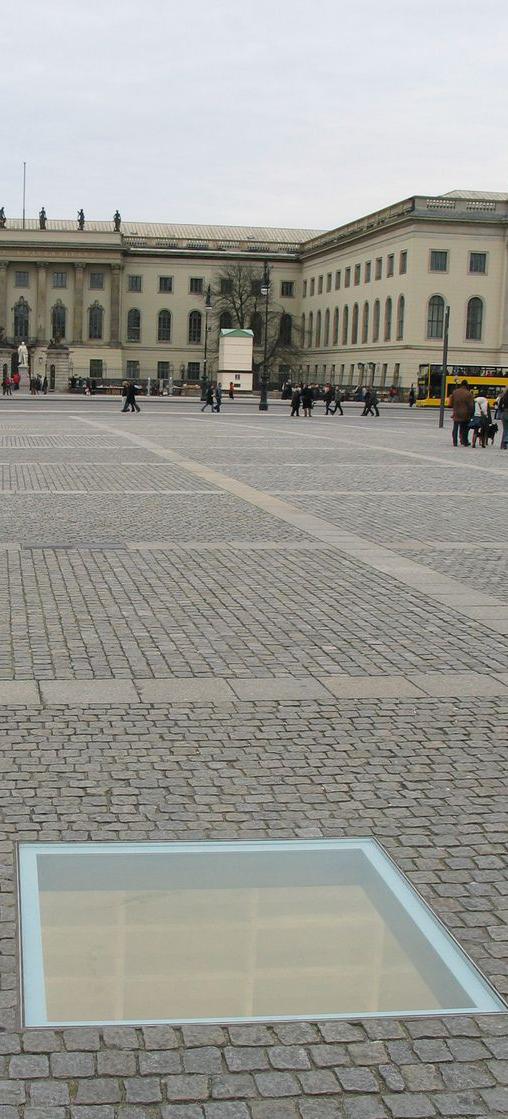
9
Bibliothek
next to the Unter den Linden in the centre of Berlin
On a similar train, the Victoria and Albert Museum, founded in 1852, is considered one of the largest in the world. It was named after Queen Elizabeth and Prince Albert with over a hundred galleries across the nation and the globe. The main headquarters is located in London. The museum houses various collections spanning several art mediums (glass textiles, sculptures, paintings, ironwork, etc.) and contains over two million individual pieces, making it one of the most comprehensive displays of all time.

10
The Victoria and Albert Museum
11 A & B WW2 Battle Scars
CASE STUDY 7: Victoria and Albert Museum
12
Some of the more historically prevalent pieces encompass Italian Renaissance, South Asian, Chinese, Japanese, Korean and Islamic items. Many of which date back to over 5,000 years. This upstanding piece of architecture, resting in the prime of London, was hugely impacted during the Second World War, due to heavy bombing in the area. Although the building was mostly reconstructed, the conscious decision to preserve some of the war affected elements was made.

The museum presented its deep respect for history and culture through these measures. It has since been renovated in certain aspects, while precariously operating around the preserved war-torn parts. As such a highly esteemed institution, this choice set an example for others to follow suit in paying tribute to historical events of significance.

13
EVOLUTION FROM SETBACKS
CASE STUDY 9: OLD CHURCH OF VILANOVA DE LA BARCA
There are some structures that were once the site of tragic events but instead of preservation in their original state, they are renovated and transformed to something that incorporates the contemporary world but still pays homage to the history of the building and its native architecture. They exist primarily to preserve the architectural influence, designs and techniques that were prevalent during its time. One such example is the Old Church of Vilanova de la Barca.
Located in the heart of Catalonia, the church was in ruins following the Spanish Civil War in 1936 and was left as such for over 80 years. Its Romanesque architecture but with apparent gothic influence, left in a rather unremarkable state that served no purpose. Until in 2009 when it was decided to revitalize the church into something more than just brick and mortar. It was to be adapted into a multi-purpose hall that could be used for concerts, wedding receptions and the like. The original form and appearance
of the structure was to be reproduced so that from outside the perception of the old church was restored while inside it was revamped with modern architectural designs like the white rendering walls that filled in the broken brick ones. This showcases a contrast between the history of the church and its ruins, while also attempting to preserve the rare architectural design using modern techniques to structurally fortify it.
14
The progression of architectural preservation and the persistent choice that communities across the globe make to hold onto history, are testament to the human nature of sentiment that we possess. It has been proven wise to keep such reminders rather than swipe the books clear, as these preservations allow us to grow and develop as a society while simultaneously paying homage to and learning from the past. The incorporation of old architectural remnants with present and future aesthetics also create infrastructure
that is culturally and historically rich- giving it depth. In essence, this notion of preservation is the very thing that drives us as a society forward, expanding our understanding of global community, politics and the likes. This in turn is what grounds us as an international community, a population of people that can look back on the past, pay our respects, and ultimately learn to sustainably growbenefitting our environment and the generations that come after us.
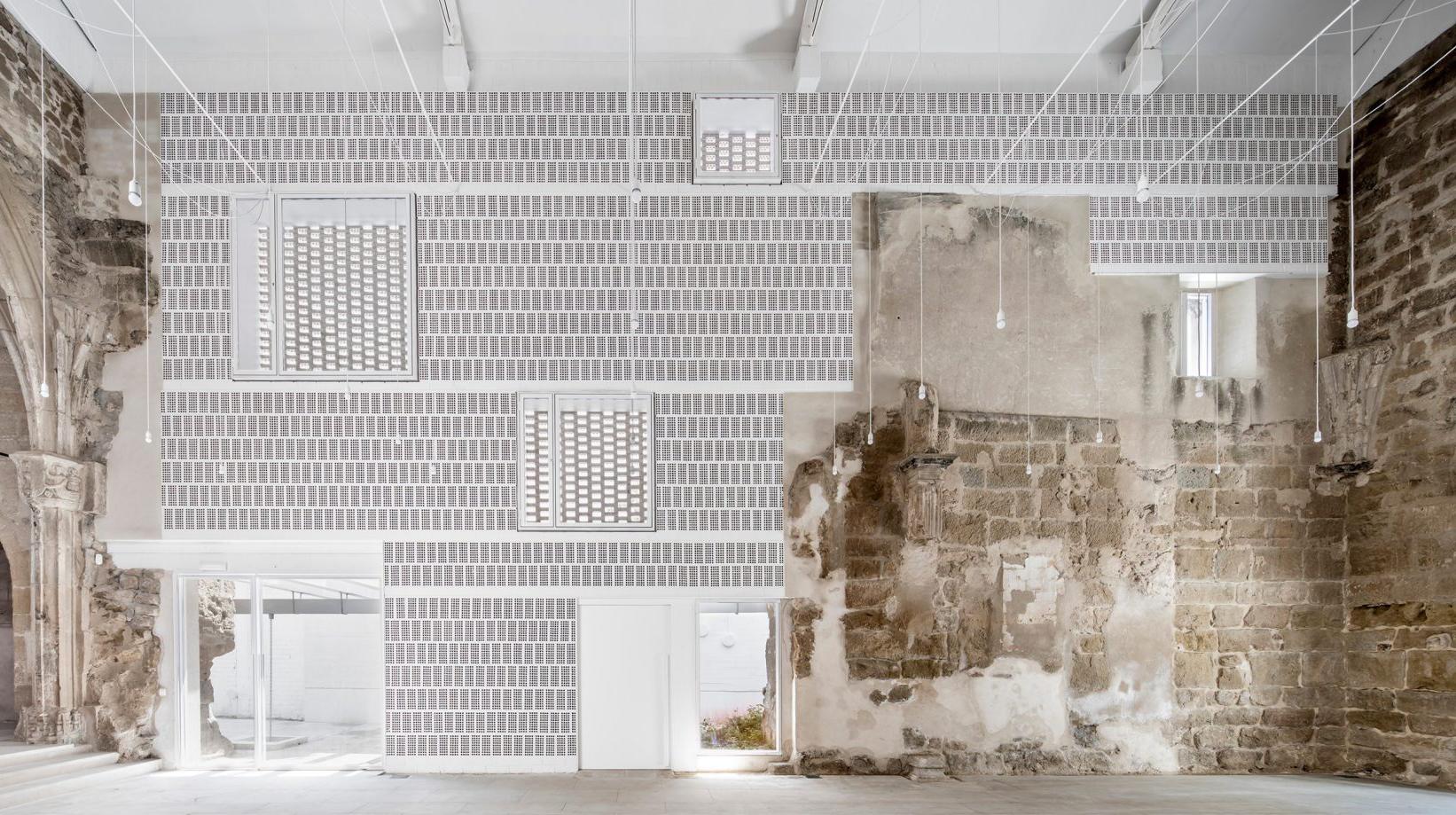
12
The Old Church of Vilanova de la Barca
15
CASE STUDY 11: 26/11 ATTACKS, LEOPOLD CAFE
Leopold cafe and bar is one of the most notable restaurants in Mumbai due to its tragic history. On 26th November 2008 around 9:30 pm, 10 members of the Militant Islamist Organisation, Lakshare-Taiba, opened fire inside the restaurant, killing 10 people and injuring several others. This became the start of a series of 12 coordinated attacks throughout the city of Mumbai that lasted 4 days. Leopold café made the bold decision to preserve the damage done to their restaurant during the attack, from shattered glass windows and bullet marks on the ceiling and walls to a crater left behind by a hand grenade under a table. Some term this as a form of terror tourism, wherein the owners of the restaurant have left these scars in the café to simply attract tourists and profit off of the tragedy Others view this as an act of preservation of the events that took place. Regardless of how these perspectives line up, Leopold café is the only physical reminder of the attack that is left today, as the other targets like the Taj and Oberoi hotels have been completely repaired of their damage and no remnants of the events remain.
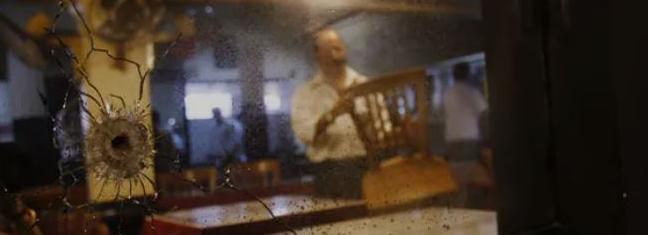
13
Bullet Holes in Leopold Cafe
16
The progression of architectural preservation and the persistent choice that communities across the globe make to hold onto history, are testament to the human nature of sentiment that we possess. It has been proven wise to keep such reminders rather than swipe the books clear, as these preservations allow us to grow and develop as a society while simultaneously paying homage to and learning from the past. The stories associated to those places hold a very strong symbolic value to the people that live on the land the events took place on. Standing today in these places envokes in us a sense of emotion that was felt during the period that has passed, keeping not just the memories but also the experiences of the people alive.
The incorporation of old architectural remnants with present and future aesthetics also create infrastructure that is culturally and historically rich- giving it depth. In essence, this notion of preservation is the very thing that drives us fowards as a society, expanding our understanding of global community, politics and the likes. This in turn is what grounds us as an international community, a population of people that can look back on the past, pay our respects, and ultimately learn to sustainably grow- benefitting our environment and the generations that come after us.
EPILOGUE
17
TEXT REFERENCES
[1] Vietnam Discovery Travel. (2019) Cu Chi Tunnels, Ho Chi Minh City | Travel Guide, History, Fee, Map. [online] Available at: https://vietnamdiscovery.com/ho-chi-minh-city/attractions/cu-chitunnels/. [Accessed 25th November 2022].
[2] Centre, U.W.H. (n.d.) Hiroshima Peace Memorial (Genbaku Dome). [online] UNESCO World Heritage Centre. Available at: https://whc.unesco.org/en/list/775. [Accessed 25th November 2022].
[3] Encyclopedia Britannica. (n.d.) Idris I | Libya, Biography, & History. [online] Available at: https://www.britannica.com/biography/Idris-I-king-of-Libya. [Accessed 25th November 2022].
[4] INDIAN CULTURE. (n.d.) Jallianwala Bagh Massacre. [online] Available from: https://www. indianculture.gov.in/stories/jallianwala-bagh-massacre [Accessed 25th November 2022].
[5] SY Blog. (2022) Chittorgarh Fort: India’s Largest fort and the Emblem of the Valiant Rajputs. [online] Available at: https://www.squareyards.com/blog/chittorgarh-fort-mnm [Accessed 25 November 2022].
[6] Dumont, M. (2020) Micha Ullman’s Empty Library: An Ode to Culture. [online] DailyArt Magazine. Available at: https://www.dailyartmagazine.com/micha-ullmans-empty-library/ [Accessed 25 November 2022].
[7] The Editors of Encyclopedia Britannica. (2018) Victoria and Albert Museum | History, Collections, & Facts. In: Encyclopædia Britannica. Available at: https://www.britannica.com/topic/ Victoria-and-Albert-Museum [Accessed 25 November 2022].
[8] GOV.UK. (n.d.) Victoria and Albert Museum. [online] Available at: https://www.gov.uk/ government/organisations/victoria-and-albert-museum.
[9] Olea, A., l and scape (2017) The Old Church of Vilanova de la Barca, Lleida, Spain. [online] weArch. Available at: https://www.wearch.eu/the-old-church-of-vilanova-de-la-barca-lleida-spain/ [Accessed 25 November 2022].
[10] ANI (2019). Eleven years since 26/11 Mumbai terror attacks - 26th November, 2008. [online] The Economic Times. Available at: https://economictimes.indiatimes.com/news/politics-andnation/eleven-years-since-26/11-mumbai-terror-attacks/the-leopold-cafe/slideshow/72235728.cms [Accessed 25 November 2022].
_________________________________________________________
18
IMAGE REFERENCES
[1A] Korina (2020). Day Trips from Ho Chi Minh City | Top Tours & Activities Outside Saigon. [online] Agoda: Check in, step out. Available at: https://www.agoda.com/travel-guides/vietnam/ho-chi-minh-city/day-trips-from-ho-chi-minhcity-top-tours-activities-outside-saigon [Accessed 25 November 2022].
[1B] Johnston, B. (2016). The most amazing underground experiences. [online] Traveller. Available at: https://www. traveller.com.au/uncovering-the-underground-gsfknk[Accessed 25 November 2022].
[2] Limited, B.P.P.C. (2020). Are we on the eve of destruction? Bangkok Post. [online] 6 Aug. Available at: https://www. bangkokpost.com/opinion/opinion/1963567/are-we-on-the-eve-of-destruction- [Accessed 25 November 2022].
[3] Centre, U.W.H. (n.d.). Hiroshima Peace Memorial (Genbaku Dome). [online] UNESCO World Heritage Centre. Available at: https://whc.unesco.org/en/list/775/gallery/ [Accessed 25 November 2022].
[4] Stouhi, D. (2022). World Monuments Fund Announces 25 Endangered Heritage and Cultural Sites for 2022. [online] ArchDaily. Available at: https://www.archdaily.com/977857/worlds-25-most-endangered-sites-include-beirut-uks-hurstcastle-and-mexicos-teotihuacan-pyramids [Accessed 25 November 2022].
[5] Taha, R. (2016). In pictures: Libyan students celebrate graduation amid ruins. BBC News. [online] 22 Oct. Available at: https://www.bbc.com/news/world-middle-east-37716396 [Accessed 25 November 2022].
[6] Rai, G.S. (2021). The makeover of Jallianwala Bagh – a lost opportunity. [online] www.stirworld.com. Available at: https://www.stirworld.com/think-opinions-the-makeover-of-jallianwala-bagh-a-lost-opportunity. [Accessed 25 November 2022].
[7] Times Of India (2021). Rajasthan introduces light and sound shows at prominent tourist places. [online] Times of India Travel. Available at: https://timesofindia.indiatimes.com/travel/travel-news/rajasthan-introduces-light-and-soundshows-at-prominent-tourist-places/articleshow/88545476.cms[Accessed 25 November 2022].
[8] www.rajasthantourplanner.com. (n.d.). Johar Place Chittorgarh, Timings, Entry Fees, Location, Facts, History, Architecture & Visiting Time, Ticket Price. [online] Available at: https://www.rajasthantourplanner.com/MonumentsCitywise/johar-place-chittorgarh.html [Accessed 25 November 2022].
[9] visitBerlin. (n.d.) Berlins offizielles Reiseportal - visitBerlin.de. [online] Available at: https://visitberlin.de [Accessed 25 November 2022].
[10] Source: Author (2022)
[11A & B] Seanetta (2019). Victoria and Albert Museum WWII Battle Scars. [online] Atlas Obscura. Available at: https:// www.atlasobscura.com/places/victoria-and-albert-museum-ww-ii-battle-scars [Accessed 25 November 2022].
[12] Olea, A., l and scape (2017) The Old Church of Vilanova de la Barca, Lleida, Spain. [online] weArch. Available at: https://www.wearch.eu/the-old-church-of-vilanova-de-la-barca-lleida-spain/ [Accessed 25 November 2022].
[13] Fuller, T. (2008). Boozy and Raucous, a Cafe Defies Terror. The New York Times. [online] 15 Dec. Available at: https://www.nytimes.com/2008/12/15/world/asia/15mumbai.html [Accessed 25 November 2022].
____________________________________________________________________
19


 1 A & B
1 A & B












